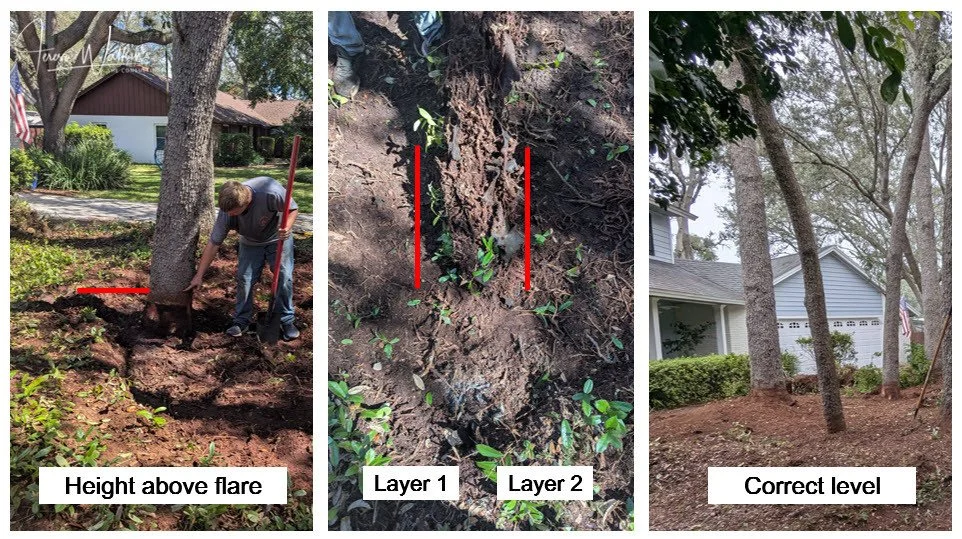Landscape consultations always provide opportunities to uncover deep dark secrets. Last month, I visited front yard shaded by mature scrub oaks that had been growing naturally for over 30 years, spaced about 10 to 15 feet apart. The problem was that over the decades, hundreds if not a few thousand, oak tree saplings had emerged to cover the entire ground under the trees, up through the azalea’s roots, and in the mondo grass lining the sloped embankment. Managing this overwhelming growth had become a true maintenance headache.
After consultations with professional arborists, one suggested solution was root collar excavation, which was extremely expensive but would not get rid of the saplings or the mulch mountain that had raised the bed up 2 feet above the front door sidewalk.
We decided on manually removing the mulch and seedlings, an arduous job for the crew. After three days, 9,000 lbs. of debris was removed and hauled away. Stripping nearly 30 years of fallen oak leaves and mulch brought the bed level with the sidewalk and revealed two layers of landscape fabric laid years apart! The landscape fabric was laid over a foot higher than the previous landscape material.
Landscape fabric should never be used in garden beds to prevent weeds (never mind two layers). It doesn’t prevent weeds — they will still grow on, in, and through the supposed barrier and makes an even bigger maintenance nightmare when the fabric must be removed.
The bed was left with the existing oak leaves, and the front yard looks cleaner and much healthier now for the oak trees. Soil and plants need to breathe. Landscape fabric should only be used under pathways made of mulch or gravel. This will keep the pebbles in Florida’s sandy soil from making their way to China.
Thank you to the best landscape crew - Otis’ Outdoors of Central Florida.



